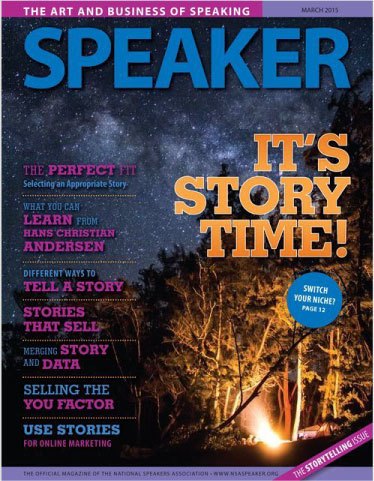A friend of mine called yesterday to complain about the way his boss runs the weekly staff meeting.
“He tells us to use the chat box to send him questions, then he never answers the questions. I don’t know if he’s ignoring us on purpose, or he’s just not tech savvy, but either way, it’s totally demotivating.”
My friend went on to say he’s started calling into the meetings: “just to get credit for being there.” But he turns off his camera and spends his time answering emails. He’s not alone. Cornerstone Dynamics found 92% of workers surveyed admitted to multitasking during virtual meetings.
Here’s what can be done to improve those numbers—and get people more involved.
The What & The How
Most managers know WHAT they want to talk about when they schedule a meeting. Examples include:
- Status updates
- Reviewing sales numbers
- Sharing HR policy decisions
- Etc.
Unfortunately, they are not equally skilled at figuring out HOW to run the meeting productively. Process and content are two different things. They need to work together. Many managers forget about the process and only focus on the content. For a productive and engaging meeting follow this 6-step progression.
- Welcome & introductions
- Clarify the goal of the meeting
- Share the agenda
- Set expectations for participation
- Check in
- Allow people to leave if they don’t need to be there
The first few minutes of the meeting set both the tone and the expectations. Productive meetings are ones where people feel valued and know why they are there, plus what they are expected to do or contribute. Here’s what it might sound like:
Welcome & Introductions
Thanks for making time to join us today. For those of you who haven’t yet met Torrence, he’s our new project manager. **In a moment I’ll give him a chance to introduce himself.
**Notice that Torrence is not yet invited to speak. The manager is just alerting everyone to the fact that Torrence will be the first speaker on the agenda.
Otherwise I see we have **Sandeep, Linabelle, Darryl, Byron, Leila and Ying on the line.
**It’s important to say everyone’s names out loud. It makes them feel included and important. It also signals that you are paying attention to who shows up.
Clarify the Goal of the Meeting
**The goal of our meeting today is to problem solve any customer issues that have come up since we last spoke and align on our critical path for project X.
**I’ve had managers tell me this step seems like overkill. “My people know what the goal of my meetings are.” But when I circle back to those same team members, they often tell a different story. They’ll say: “I show up because my boss sent me a calendar invite.”
A manager’s first job at the top of the conversation is to break pre-occupation. People always arrive at a meeting having come from someplace else. Likely they were at another meeting about a different topic. Get them focused on YOUR topic and YOUR goal.
Share the Agenda
We’ve an hour together so let’s spend the first **5 minutes getting to know Torrence, the next 15 minutes on hearing what’s going on with our customers. Following that we’ll spend 20 minutes on status updates and end with figuring out how we can support each other better.
**My friend’s biggest complaint about his boss is that meetings are a total waste of time. By sharing a timed agenda, you reassure staff that the meeting will be time well spent.
The Venezuelan psychologist Edgar Elías Osuna researched the psychological cost of waiting. He found stress accumulates the longer you wait—especially when you don’t know when it’s going to be your turn. Sharing the amount of time dedicated to each topic lowers anxiety among attendees. It’s the reason subway countdown clocks are so effective.
Set Expectations for Participation
Before we really get going, let’s everyone turn on our cameras. I’d like this to be an interactive discussion. I’ll facilitate by calling on each of you to share your thoughts as we work through the agenda.
We’ll start with Torrence and then Linabelle, you’re on deck. If you’ve any questions while people are talking, pop them into the chat.
**Darryl, can you make sure we don’t miss anything that shows up there? Ying, will you make sure we keep to time? And Sandeep, why don’t you be our note taker today.
**The more you can get others involved with a task related to the RUNNING of the meeting, the more they will take responsibly for CONTENT of the meeting.
Check In
**Anything I’ve missed? (pause)
**Checking in signals to your team that the meeting is for and about them. It provides space for people to add their own topics.
Allow people to leave if they don’t need to be there
Okay, if the goal and agenda of this meeting are not relevant to you, feel **free to drop off. Just send us a chat message to let us know that you are leaving so we can say goodbye.
Alright, let’s start by getting to know Torrence!
** In many companies people are invited to meetings as a courtesy. If this happens in your company you can let people know you are happy to have them participate, but they are not required to stay.
One Last Tip: Turn on Your Camera
You’ll notice part of the expectation setting step above is a request for everyone to turn on their web-cams.
When you invite your audience to turn on their cameras, it cuts down on their multitasking and helps them focus on your content. This, in turn, helps with memory retention after the meeting.
Because we are in a time of social distancing, we have to work hard at maintaining social cohesion. Which is just a fancy way of saying: relationship or connection.
Online we only have two of our five senses available to us. Hearing and Sight. When you only have two of the five senses available, it’s an act of generosity to use both of them: your microphone AND your camera.
Imagine if you were at work and you walked into the meeting room and all the lights were off. Would you hold the meeting in the dark? Of course not.
When you don’t turn on your camera, you’re signaling to everyone else: I’d rather sit in the dark than have a relationship with you.
In Conclusion
By implementing the above steps you’ll cut down on the number of people calling their friends to complain about how demotivated they feel about work—and you’ll increase the impact of your day-to-day meetings!
















